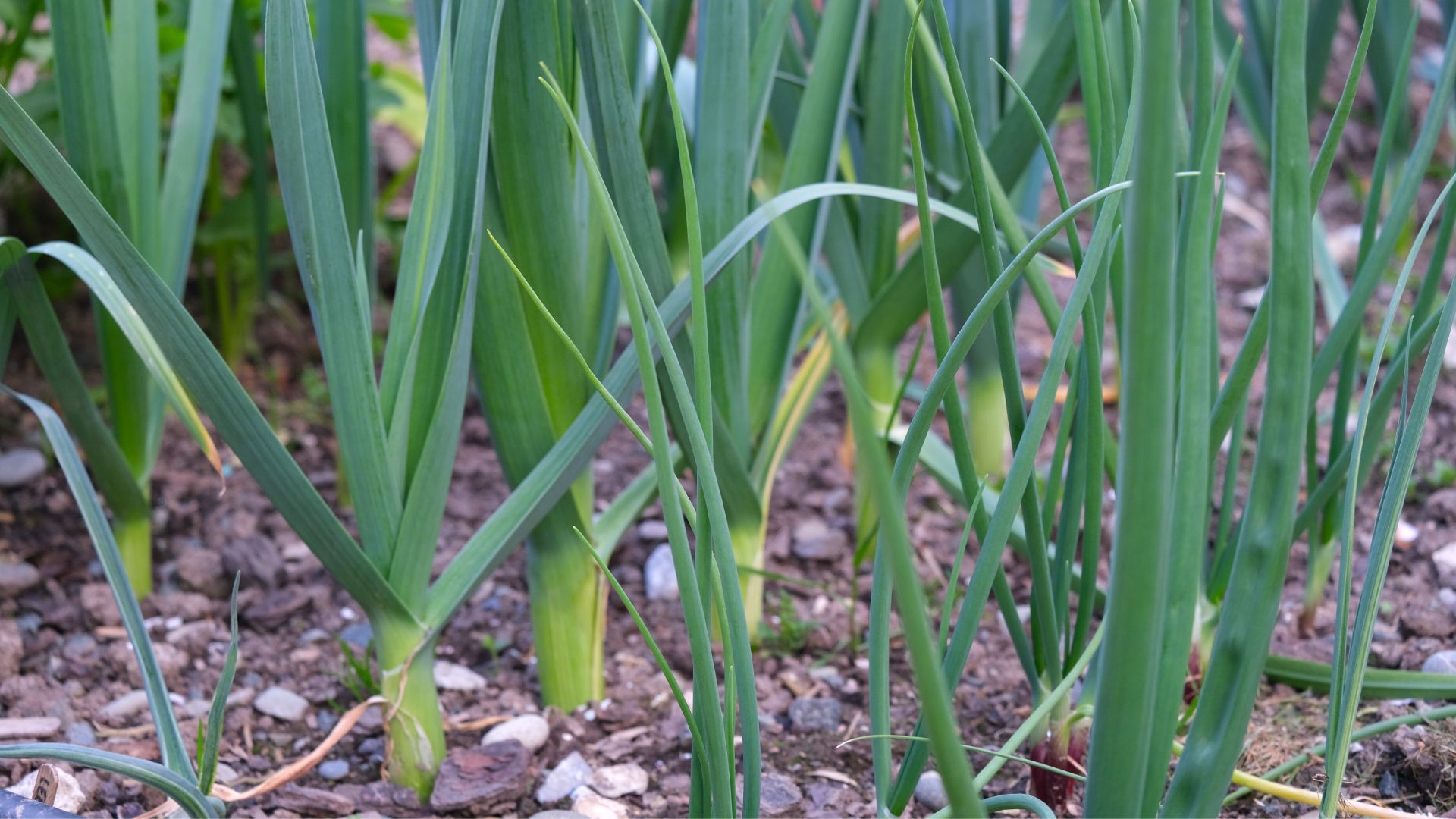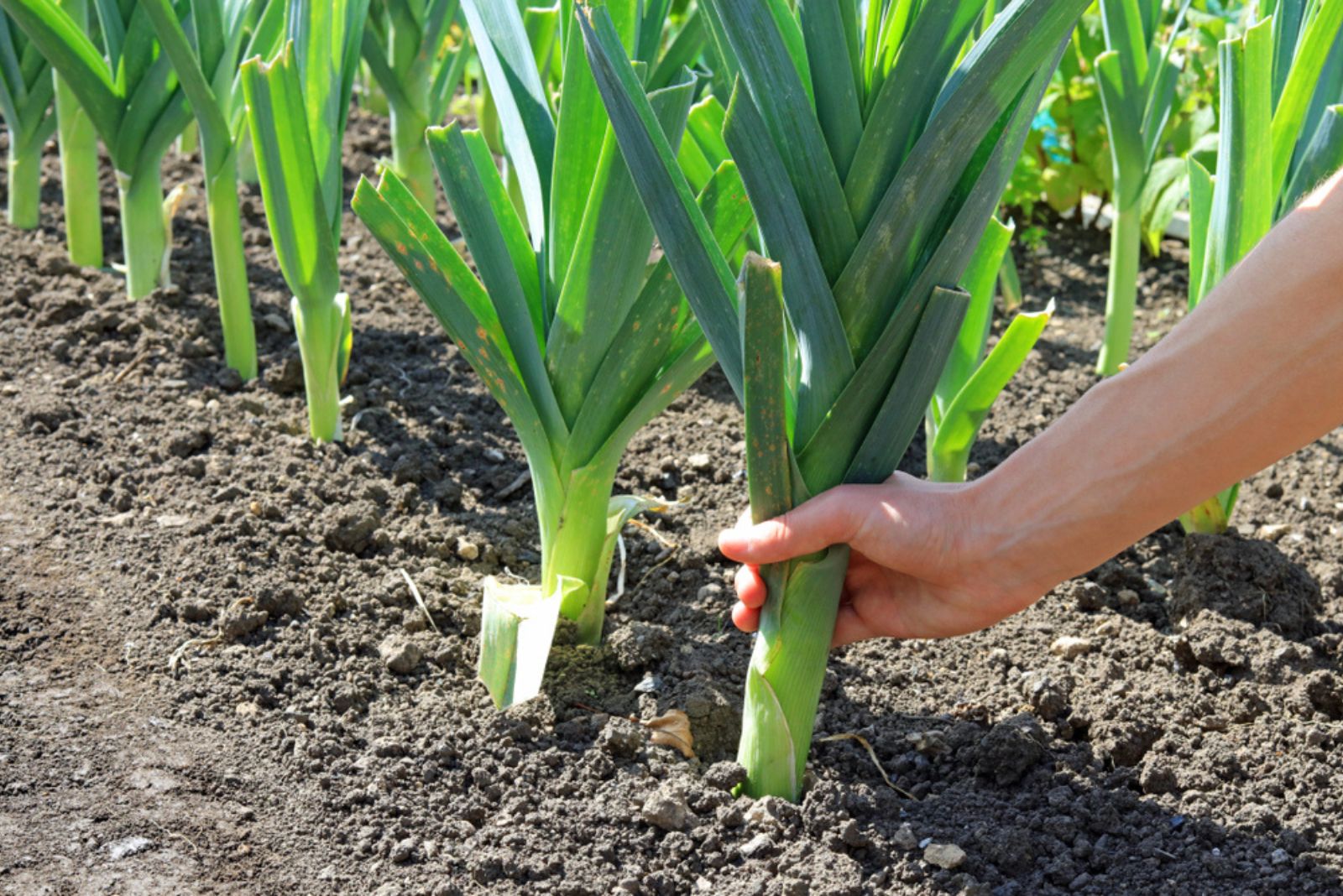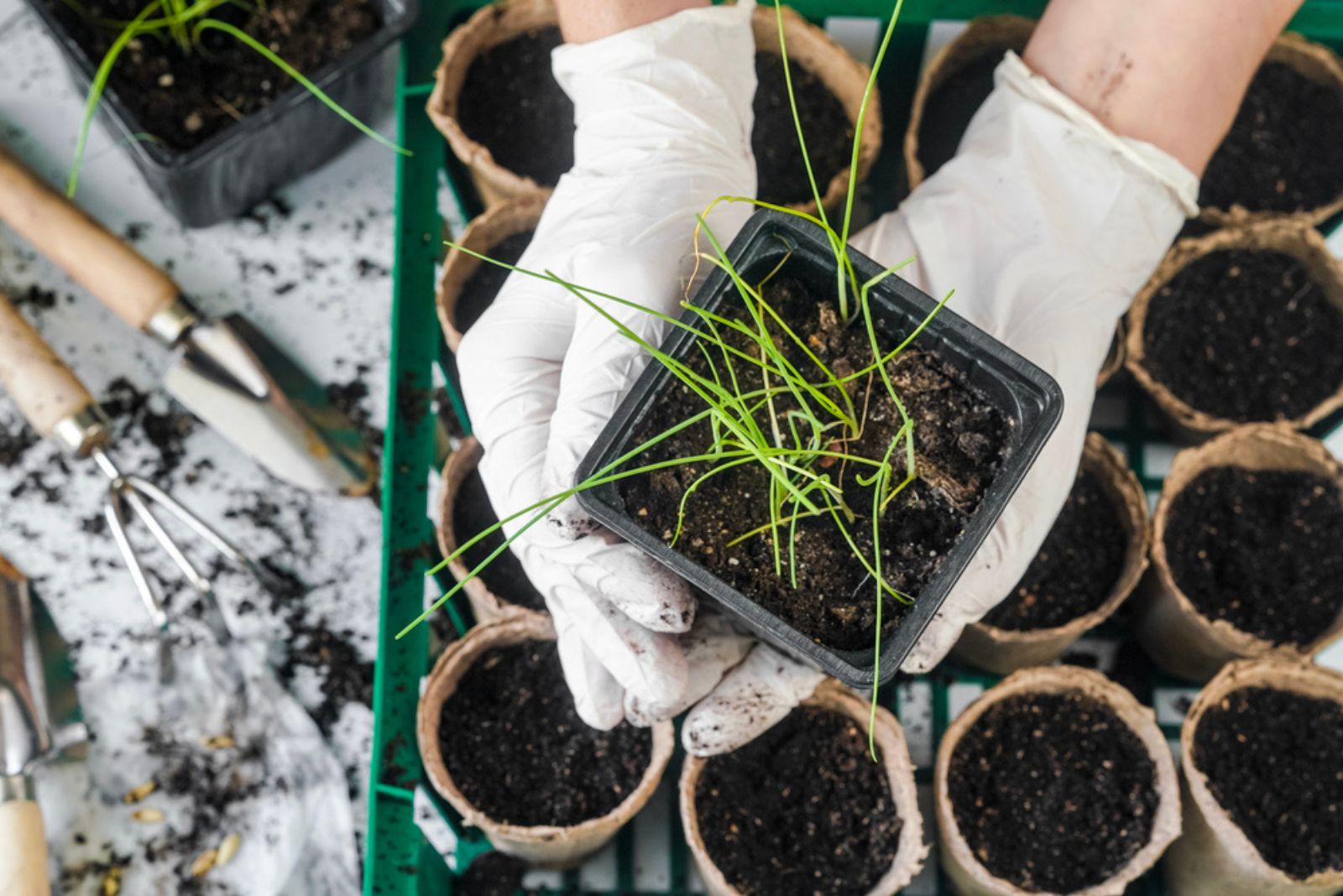As I see it, leeks are just larger green onions, but they do have their perks. One of them is that you can harvest them until the frost disables their growth, which is quite a long time.
And the best part about them is that they are true perennials and can multiply on their own using their lateral growths. (1)
Leeks are cool-weather crops with a long growing season, but continuous harvesting amends that.
So, when can we harvest this veg? Find out below!
When To Harvest Leeks
You can start harvesting leeks from late summer until the ground freezes, especially if you only need a couple of them for a special meal. Of course, it does depend on your climate and the variety, but technically, you can pick baby leeks as soon as they develop their leaves.
Generally, most gardeners wait until the white part of the stalk is approximately 1-3 inches long, depending on the variety they choose to grow.
As for the taste, earlier picks are more tender and have a mild flavor, while fully mature leeks have that classic robust taste.
You can choose between early-, mid-, late-, and extra-late season leeks. Just know that the first ones are rather tender and will need mulching if you want to overwinter them.
On the other hand, early-season leeks may take as little as 50 days to mature, so they are one of many gardeners’ favorites.
Finally, these vegetables thrive in early spring and late summer and that’s when you should plant them.
Growing Leeks Successfully
Of course, you can’t harvest leeks if you don’t know how to grow them. Here are some tips that can increase your yield and leek quality.
• Get high-quality seeds from a trusted source.
• Choose a spot in your vegetable plot that gets full sunlight, has good drainage, and has a nutrient-rich soil. You can amend your substrate with compost to make it better suited for these veggies.
• Test your soil before using any fertilizers. That way, you’ll know whether you actually need to add any or which nutrient your leeks will require.
• Plant the leek seedlings on an overcast day (or sow the seeds when the soil gets warm) and water them thoroughly, but don’t wet the medium so much that it’s soggy.
• If you want to jump start the season, you can start leeks indoors or in a greenhouse 10-12 weeks before the winter ends. Move them outdoors when they’re about 8 weeks old. These are cool-season crops, so they won’t mind the cold.
Growing leeks isn’t that difficult, although it does require plenty of patience due to their long growing season. However, starting them indoors and moving them outdoors in later winter or early spring will give you a great head start and increase your yield by and large.
Keeping Them Cool And Covered
Leeks are a classic cool-weather vegetable and thrive in temperatures between 55-75°F. In fact, low winter temperatures can cause them to bolt, which makes their flesh rather tough and chewy, almost inedible.
Therefore, if you live in a region that gets constant temperature swings, you should keep your leeks in a greenhouse or use row covers to protect them from unexpected weather.
You can also mulch more tender varieties to get them through the winter if you want to grow this vegetable as a perennial.
Of course, it’s always best to choose varieties that comply with your weather conditions, which will make gardening and growing leeks a breeze.
References:1. Mahr, S. (n.d.). Leeks. UW-Madison, Wisconsin Horticulture Division of Extension.



